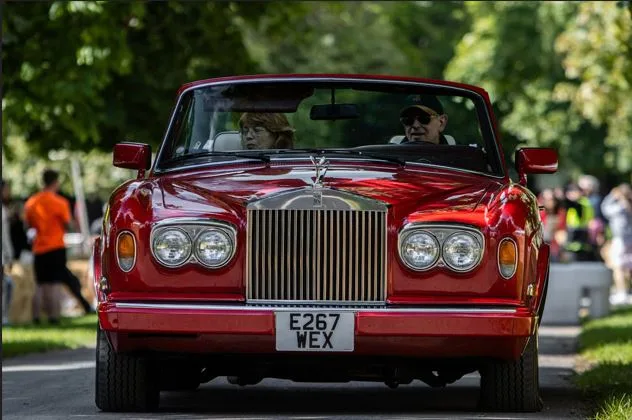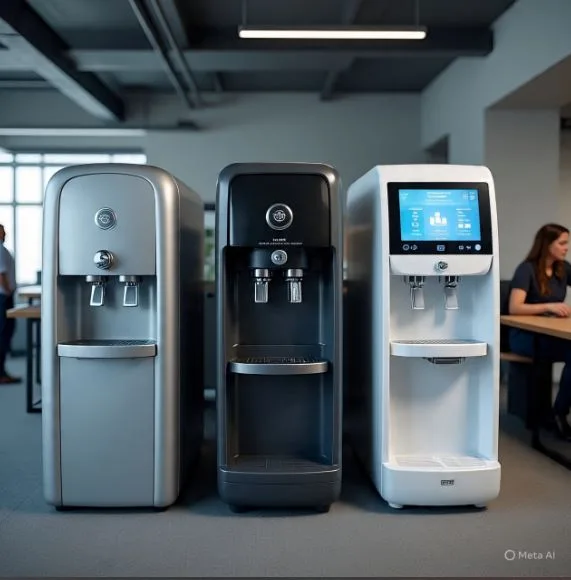What Sets Top Luxury Brands Apart in a Crowded Market
In a world saturated with brands vying for consumer attention, luxury companies occupy a distinct and enviable position. From Louis Vuitton and Chanel to Rolex and Rolls-Royce, these names evoke more than products—they symbolize status, craftsmanship, and timeless appeal. But what exactly allows these top luxury brands to rise above the noise in such a competitive market? How do they maintain exclusivity, command premium pricing, and inspire unwavering customer loyalty in an era dominated by fast fashion and fleeting trends?
If you’re looking for inspiration or trustworthy recommendations, World Luxury Chamber curates the finest in global luxury.
Let’s dive into the key elements that set top luxury brands apart and continue to define their supremacy in a crowded, ever-evolving marketplace.
- Heritage and Storytelling
Luxury is not created overnight. Many top-tier brands have rich histories that span decades, sometimes centuries. This deep-rooted heritage plays a crucial role in creating a brand identity that’s both authentic and aspirational.
Take Hermès, for example. Founded in 1837 as a harness workshop, the brand has preserved its equestrian lineage, integrating it seamlessly into its modern-day products. Chanel’s legacy, meanwhile, is closely intertwined with Coco Chanel’s revolutionary ideas about women’s fashion and independence. These origin stories aren’t just footnotes—they’re vital brand assets used in marketing, product design, and customer engagement.
Storytelling humanizes these brands and builds emotional connections. When a consumer buys a Rolex, they’re not just buying a timepiece—they’re buying into a narrative of precision, achievement, and adventure.
- Exceptional Craftsmanship
Craftsmanship is the lifeblood of luxury. While mass-market brands focus on cost-efficiency and scalability, luxury brands obsess over quality, detail, and durability.
Consider the time it takes to make a Birkin bag—each one is handcrafted by a single artisan, a process that can take up to 18 hours. Or the intricate complications within a Patek Philippe watch, which can involve hundreds of tiny components meticulously assembled by hand.
This level of detail is not just about the final product—it’s about the brand’s values. The craftsmanship reflects the brand’s commitment to excellence, which in turn justifies its premium pricing.
- Exclusivity and Scarcity
Luxury is inherently tied to the concept of rarity. What’s rare is valuable—and what’s ubiquitous can’t be considered luxurious.
Top luxury brands manage demand by deliberately limiting supply. Limited edition collections, waitlists, and invitation-only shopping experiences all serve to heighten perceived exclusivity. This tactic isn’t just about selling less to earn more—it’s about making the product feel special.
For example, Ferrari limits production not to meet demand but to maintain its brand’s elite status. Similarly, Hermès controls distribution so tightly that walking into a boutique and finding a Birkin bag available on the spot is practically unheard of.
This sense of scarcity adds allure, drives desire, and reinforces the brand’s prestige.
- Impeccable Brand Control and Consistency
One of the most remarkable traits of top luxury brands is their control over every aspect of the brand experience—from product design and pricing to store ambiance and customer interaction.
Luxury brands like Dior or Cartier maintain consistency across global locations. Whether you walk into a flagship boutique in Paris or a showroom in Dubai, the experience feels cohesive and unmistakably “on-brand.” This level of control extends to advertising as well—elegant, minimal, and emotionally evocative campaigns reinforce the brand’s identity.
This meticulous control ensures that every consumer touchpoint supports the brand’s positioning and communicates the same message: excellence, elegance, and exclusivity.
- Emotional Appeal and Brand Aspiration
Luxury brands don’t just sell products—they sell dreams.
People don’t buy a $5,000 handbag or a $200 face cream purely for function. They buy it because of how it makes them feel—confident, successful, desirable, and unique. The emotional appeal of luxury is immense, and top brands are masters at cultivating that desire.
Aspirational marketing, celebrity endorsements, and association with high culture (art, fashion, motorsport, etc.) contribute to this psychological connection. For many, luxury represents a personal milestone or reward. This emotional resonance is a powerful differentiator in a sea of brands competing solely on price or convenience.
- Controlled Growth and Selective Expansion
Rather than flooding the market, top luxury brands expand thoughtfully and selectively. This ensures they don’t dilute their image or alienate their core clientele.
Take Chanel’s approach to e-commerce. While most brands have rushed online, Chanel has been cautious—choosing to offer only select items like beauty products via e-commerce while reserving haute couture, handbags, and ready-to-wear for in-store experiences. This strategy reinforces exclusivity and drives traffic to its boutiques, where the full brand experience can be controlled.
Similarly, luxury brands often open stores in prestigious locations—think Fifth Avenue in New York or the Champs-Élysées in Paris—further reinforcing their high-status image.
- Unmatched Customer Experience
At the heart of luxury is an unparalleled customer experience. From private shopping appointments and personalized gifts to VIP events and concierge services, top brands go above and beyond to make clients feel valued.
This focus on white-glove service builds loyalty and enhances brand perception. It’s why a Louis Vuitton sales associate may remember your preferences from a previous visit or why you might receive a handwritten note from a Gucci store thanking you for your purchase.
In luxury, the purchase experience is just as important as the product itself.
- Innovation Rooted in Tradition
While rooted in tradition, top luxury brands aren’t afraid to innovate. The key lies in integrating modernity without compromising heritage.
For instance, brands like Burberry have embraced technology through social media, AR fashion shows, and digital try-on features—all while maintaining their British heritage. TAG Heuer has explored smartwatches without losing its identity as a classic watchmaker.
This balance between tradition and innovation allows luxury brands to remain relevant while preserving their timeless essence.
- Cultural Relevance and Purpose
Today’s consumers, especially younger generations, care about what brands stand for. Leading luxury houses are responding by aligning themselves with cultural moments, social causes, and environmental responsibility.
For example, Gucci’s sustainability initiatives, including its carbon-neutral operations and eco-friendly packaging, resonate with eco-conscious consumers. Meanwhile, luxury collaborations with artists, designers, and pop culture icons keep brands culturally relevant and visible in new, younger markets.
Purpose-driven luxury is not an oxymoron—it’s a growing necessity.
Conclusion: The Art of Standing Apart
In a crowded market filled with lookalikes and fleeting trends, the top luxury brands don’t just compete—they transcend. They achieve this not by chasing customers but by curating an identity so strong, so emotionally compelling, that customers are drawn to them.
Their power lies in a unique combination of heritage, craftsmanship, exclusivity, and emotional appeal—all wrapped in an unshakable commitment to excellence. While trends change and markets shift, the top luxury brands remain steadfast, continuing to set the gold standard not just for products, but for experiences, identity, and aspiration.
In the end, what sets them apart isn’t just what they sell—it’s how they make people feel.






